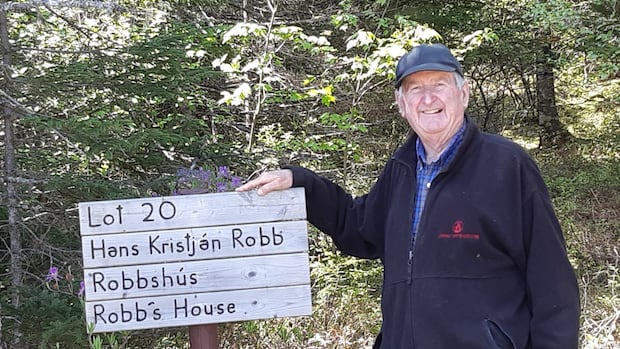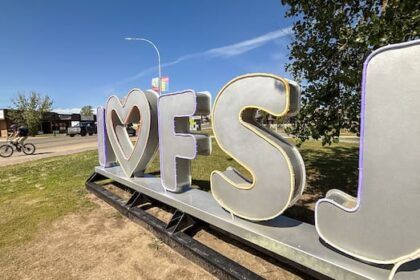Nova Scotia·NewMarshall Burgess is proud of his Icelandic roots in Nova Scotia and doesn’t want his family’s legacy to be forgotten.First group of Icelandic immigrants arrived in province in 1875Vernon Ramesar · CBC News · Posted: Sep 28, 2025 5:00 AM EDT | Last Updated: 2 hours agoMarshall Burgess stands next to a sign indicating the location of an original settler’s house in Markland. (Marshall Burgess)Marshall Burgess is proud of his Icelandic roots in Nova Scotia and doesn’t want his family’s legacy to be forgotten.His grandmother, Steinvor Nicolina Erlendsdottir, was born on the Nordic island and was one of the Icelandic immigrants who arrived in the province in the late 19th century.Today, Burgess is vice-president of the Icelandic Memorial Society of Nova Scotia, which was formed in 1998 to honour the contributions of those settled here.”I think it’s an important part of our history,” says Burgess, 73. “I’d like to, you know, keep that memory alive.”The quest to lure Icelandic immigrants to Nova Scotia began after Confederation with the help of John Anderson. Anderson, an Icelander who was living in Halifax, was hired by the Nova Scotia government as an immigration agent tasked with attracting settlers to the East Coast province.A replica log cabin, identical to the ones originally occupied by Icelandic settlers, has been erected in Markland. (Marshall Burgess)”They left Iceland because of the harsh conditions there at that time,” says Burgess. “Every province had agents going to Europe looking for new settlers.” In 1875, the first Icelanders — a group of about 80 — came to Nova Scotia from a failed railway settlement in Kinmount, Ont.The Nova Scotia government promised them 40 hectares of land, a log cabin, tools, and supplies for one year. In exchange, the settlers had to remain in the area for five years and clear four hectares of land.Two communities were established. The larger of these, Markland, near the Musquodoboit River gold mines, proved unforgiving for the settlers.A memorial cairn has been set up at the entrance of the former Markland Icelandic settlement. ( Icelandic Memorial Society of Nova Scotia)”They were sheep farmers and you couldn’t rear sheep up there in that rock pile,” Burgess says. “There were bears and wolves and coyotes there. So they had a very hard struggle.”For many Icelandic immigrants, their time in the province was brief. Most families left within six years, lured by letters from relatives in Manitoba and North Dakota. Burgess says his ancestors, the Huskilson family, were the only family to stay in the smaller settlement at Lockeport. “My great-grandfather was a carpenter. The Locke family, merchants in Lockeport, kept him employed. That’s probably why he stayed,” he says.By the 1990s, little remained of Markland. The cabins collapsed, leaving behind only foundations and wells. The Icelandic Memorial Society’s first project was a memorial cairn erected at the site of Markland in 2000 made up of stones from each family’s homestead and topped with a rock from Iceland.Burgess says they also rebuilt a log cabin based on historical records. Another memorial has been erected in Lockeport to commemorate a smaller Icelandic settlement there. (Marshall Burgess)Another cairn was later erected in Lockeport to commemorate the families who lived there.In 2024, the society successfully applied for a grant from Halifax Regional Municipality to erect interpretive signs at the Markland site.Today, the society has 52 members, many of them descendants scattered across North America.They gather annually for events like the Markland Walk, an eight-kilometre walk held earlier this month to the original settlement.Board members of the Icelandic Memorial Society of Nova Scotia. Burgess, vice-president, left; Bonnie Price, treasurer, centre; Ken Burrows, president, right. (Marshall Burgess)Burgess says he has been to Iceland several times and has even reconnected with family there.”This lady came into the hotel and she said are you Huskilson’s people? And I said, ‘Well, yes.” She said, ‘Well, I am your relative,'” he says.”From there on the rest of the way around Iceland, every hotel we stayed in, we had relatives of ours come and meet us.”MORE TOP STORIES
Nova Scotians with Icelandic roots hold tight to their legacy












